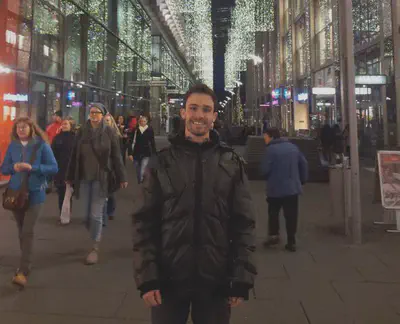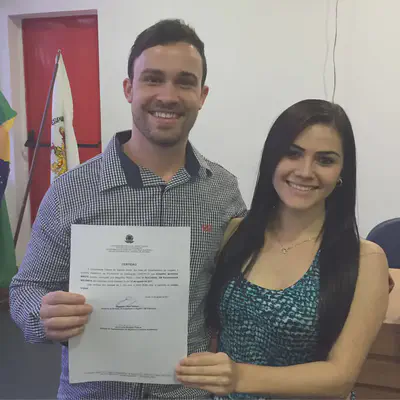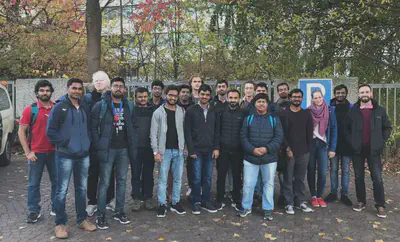A Multidisciplinary Journey
As this is the first post of my personal blog, it couldn’t be different: today I will write a bit about my academic and professional journey!
I began my studies back in 2009, when I started a technical course in mechanics at the Federal Institute of Espírito Santo, Brazil. In this course, I was exposed to a range of topics including mechanical projects, electronics, mechanical fabrication, metrology, materials science and beyond. The course was half-half theory and practice. Thereby, I also acquired some hands-on experience. Further, I had the opportunity to lead the welding lab practices for a cohort of about 20 students during one semester.
In 2010, I was fortunate to be admitted to the main university of my state, UFES, in the undergraduate course of Mechanical Engineering. Simultaneously, I started to learn the English and German languages, as I was planning to one day study abroad.
In 2011, the Brazilian government launched the Science Without Boarders - CSF exchange program, which gave the opportunity to outstanding students to have experiences abroad by providing them with scholarships. As I was already learning foreign languages and had good grades in my undergraduate studies, I could meet the admission requirements and I was offered a scholarship to study in Germany.

In 2013, I moved to Dresden, Germany, to then start my exchange program. There, I lived for 3 months and participated in intensive German culture and language courses. After this adaptation period, I moved to the city of Zwickau, where I participated in the Automotive Engineering and Management course as an exchange master student. During the course, I had the opportunity to gain general knowledge about the automotive industry, such as motor development, acoustics, logistics and beyond. Importantly, I also had my first experiences with simulation sciences (in particular computational fluid dynamics), which rapidly increased my interest in the field. Besides that, I did an internship at Audi AG (2014-2015) on the resistance welding development team. There, I learned more about the German labor market, vividly experienced the German culture, and gained knowledge of robotic welding.

After the internship at Audi AG, I moved back to Brazil to finish my undergraduate studies in Mechanical Engineering. Simultaneously, I did an internship in a local company (Tecvix), where I was responsible for performing mechanical and fluid dynamics simulations for diverse projects in the oil and gas industry. These simulation experiences, together with the similar experiences I had in Germany, directly influenced my decision to further expand my knowledge in the direction of computational sciences.
After concluding the undergraduate course in Mechanical Engineering in the middle of 2017, I was fortunate to be admitted to the master in Computational Sciences in Engineering at the Technical University of Braunschweig. During my masters’ studies, I chose the specialization in Mathematics and Computer Science, but I also took diverse lectures in fluid dynamics. Simultaneously with the theoretical lectures, I sought to improve my research abilities. Therefore, I worked as a research assistant in two different research institutes for more than 2 years.

At the Institute for Communications Technology, I worked on projects related to the robustness of semantic segmentation deep neural networks (DNNs) under the supervision of Andreas Bär. Among others, the tasks I contributed include: improving an existing approach for domain mismatch estimation by means of multi-task learning and autoencoders; implementing a teacher-student framework for semantic segmentation; and implementing a PyTorch-based toolbox to assess the robustness of semantic segmentation DNNs against diverse adversarial attacks and corruptions.
At the same time, I also worked as a research assistant at the Institute of Joining and Welding. There, I had further hands-on experience in simulation sciences and machine learning by working on diverse weld-related projects. My activities there included: development of a differential geometry-based tool to assess porosity properties in welded specimens using 3D computed tomography data; implementation of a ResNet-based data-efficient neural network for the prediction of stress-strain curve of welded alloys using multi-fidelity (2D/3D simulation and experimental) depth-indentation testing data; execution of multi-focal laser welding thermal simulations for welding parameter estimation; and developed a weld bead image segmentation tool to automatically segment and measure weld beads.

To conclude, in 2020 I wrote my masters thesis at the Technical University of Munich where I was supervised by Vladimir Golkov and worked on topics around understanding of deep learning, self-supervised learning, and unsupervised deep domain adaptation. If you are interested in reading more about my master’s thesis, please take a look at this post.